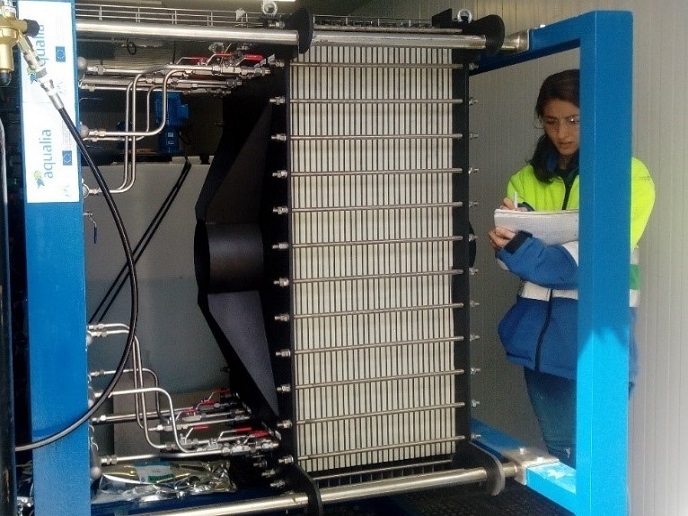Bacteria power the desalination process
The EU-funded MIDES(opens in new window) project addressed this challenge by developing and operating the world’s first industrial demonstrator of a revolutionary technology based on microbial desalination cells(opens in new window) (MDCs). “We used MDCs as a pre-treatment for reverse osmosis(opens in new window) (RO), enabling salt separation and water treatment to be conducted simultaneously,” states project coordinator Frank Rogalla. RO is the most widely applied method for desalination; however, it uses high pressure that requires at least 3 kWh/m3 seawater, while other technologies need even more. To overcome this limitation, MDCs work alongside RO for treating wastewater and generating energy for carrying out desalination. MDCs employ specific bioelectroactive bacteria, called Geobacter(opens in new window), to transform the energy contained in the organic matter present in wastewater into electrical energy. The potential difference created between the electrodes causes the separation of salts through the ionic exchange membranes, allowing the desalination of seawater and brackish water without the need for external energy. “This enables a reduction in electricity needs by at least an order of magnitude compared to conventional desalination by RO,” Rogalla explains.
From lab to pilot plant
Project partners overcame the current limitations of MDC technology such as low desalination rate, high manufacturing cost, and biofouling and scaling problems on membranes, and optimised the microbial electrochemical process. This was achieved through an exhaustive scaling up process involving novel anti-fouling ion exchange membranes and new carbon-based electrodes. Researchers employed a circular economy approach in the MDCs using recycled plastics to configure the cells and stack. They also designed mathematical simulation models based on experimental results from the lab-scale, pre-pilot and pilot-scale stages of the project to optimise the process. In addition, new operational parameters and membrane cleaning protocols were implemented to enhance the bioelectrical reactions. Following successful scaling up, MIDES designed and built two MDC prototypes, each comprising one stack of 15 MDC units with a total area of 0.4 m2 per unit. “Both prototypes can process thousands of litres brackish water and seawater per day with very low energy consumption,” reveals Rogalla. The first MIDES pilot plant at Denia in Spain involved brackish water and wastewater pretreatment, the MDCs and low-pressure RO. The second site on the Spanish island of Tenerife used MDCs to carry out partial desalination of seawater and RO for subsequent post treatment to obtain drinking water from seawater without the use of external energy.
Benefits for rural and urban communities
By developing a combined water desalination and wastewater treatment system, MIDES can facilitate low-cost access to safe drinking water according to national and EU regulations. It can also provide treated wastewater for reuse in irrigation and agricultural applications, thereby relieving pressure on current resources. MIDES paves the way for smaller capacity decentralised plants, which purify wastewater with a positive energy balance. This means that with the help of MDCs, this technology can be implemented at remote industrial sites, farms and rural communities with limited power supply. Furthermore, MIDES can benefit coastal sites by equipping them with comprehensive wastewater treatment plants that generate electricity and desalinate water within intelligent management and control systems. “The success of MIDES is highly significant because populations are growing, especially in coastal areas, and strategies are urgently needed for providing sustainable and affordable, high-quality drinking water for everyone,” Rogalla concludes.







